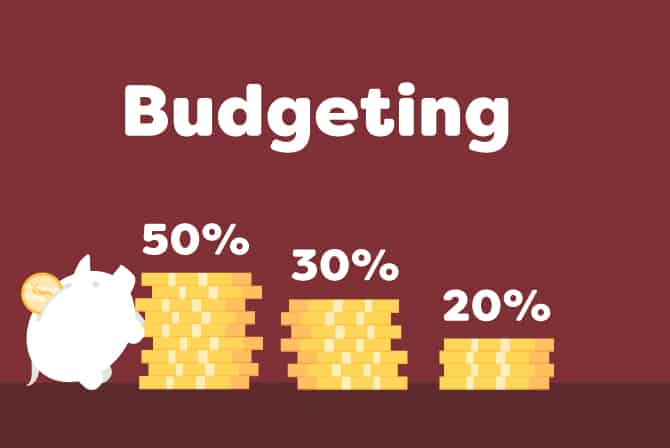Budgeting Using the 50/30/20 Rule

To set yourself up for savings success, consider implementing the 50/30/20 rule.
The 50/30/20 rule states that your after-tax income should be roughly divided in three ways:
- 50% to needs.
- 30% to wants.
- 20% to long-term savings.
Click here for a tool from our financial literacy partner, Banzai, to help you understand how much of your monthly income should be used in each category according to the rule.
The beauty of the rule is its simplicity. Budgeting can be complicated and stressful, but the 50/30/20 rule can help simplify it.
Needs
People define their needs in vastly different ways. However, some needs we can all agree on include housing, food, utilities and transportation – just to name a few.
Here are some more examples of needs:
- Housing: rent, mortgage, homeowner’s insurance, property taxes
- Transportation: car payment, gas, bus or train passes, parking fees
- Insurance: auto, life, homeowners, health, renters
- Utilities: gas, water, electricity, internet, cell phone
- Loan payments: credit card debt, student loans
- Health care: insurance premiums, deductibles, prescriptions
Note that necessities come in two flavors: routine expenses and predictable goals. Some things you’ll pay for regularly and others require you to think ahead and anticipate future needs.
Wants
Wants are things that you enjoy but could live without. They are subjective and personal. The 50/30/20 rule encourages you to be honest about your wants and give yourself permission to spend some of your money on things that make your life enjoyable.
Here are some examples of wants:
- Gym memberships
- Clothing
- Online subscriptions
- Cable TV
- Furniture
- Vacations
- Hobbies
- Eating out
If you squint, you’ll see similarities between your wants and needs. Clothing, for example, is a necessity, but spending extra cash for fancy clothes is most likely a want than a need. This doesn’t mean you can’t treat yourself with things that are fun or unnecessary, but you need to be honest with yourself while creating your budget to balance your wants and your needs.
Savings
There is no financial habit as important as saving. Unsurprisingly, it can also be the hardest. Saving a little each paycheck can make things much easier when unexpected expenses come up. Whether you follow the 50/30/20 rule or not, you should make a goal to save a significant portion of your income for rainy days.
One of the great secrets to saving is finding ways to make it automatic. Don’t put yourself in the position of deciding how much to save with each paycheck. Make the savings decision once, save every paycheck, and make it a lifelong habit.
You can make saving more meaningful by giving your savings a purpose. Do you want to pay for college? Buy a house? Pay for a wedding? Buy a new car? Go on a dream date? Save for that purpose. This will give you a reason to save, rather than just doing it because you feel like you should.
Like all budgeting methods, the 50/30/20 rule is a suggestion and can be adjusted to fit your situation.
This article has been republished with permission. View the original article: 50/30/20 Budgeting.
